Christmas in Norway is a fascinating time. From what's on the dinner table to the work party, let's take a closer look at the Norwegian take on the festive season.
Regardless of your religious beliefs, Christmas is a special time for so many people around the world. It's a chance to stop working and spend time with family.
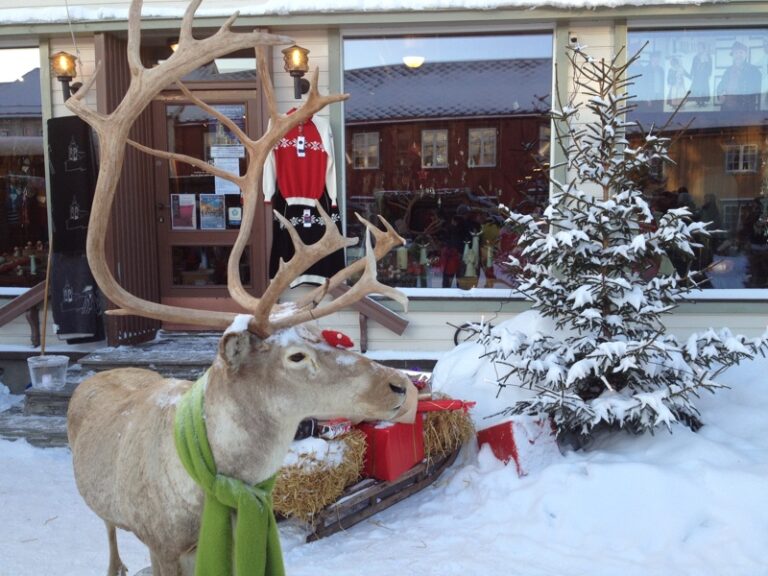
Of course, this year's Christmas celebrations are going to be very different. But that doesn't mean we can't keep some of the best traditions alive!
Whether this is your first or fiftieth Christmas in Norway or you're looking to incorporate a touch of Scandinavia into your own festive celebrations, I hope this article inspires you to do something a little different this year.
Table of Contents
A Norwegian Christmas
Most people outside of Norway think Christmas time here must be really magical, winter markets, snow everywhere, colourful lights, reindeer strolling along the streets, and of course, Lapland is the home of Santa Claus, right?
The reality, as you shouldn't be surprised to learn, is quite different! Here are just some of the Norwegian Christmas traditions I've learned about over the last years.
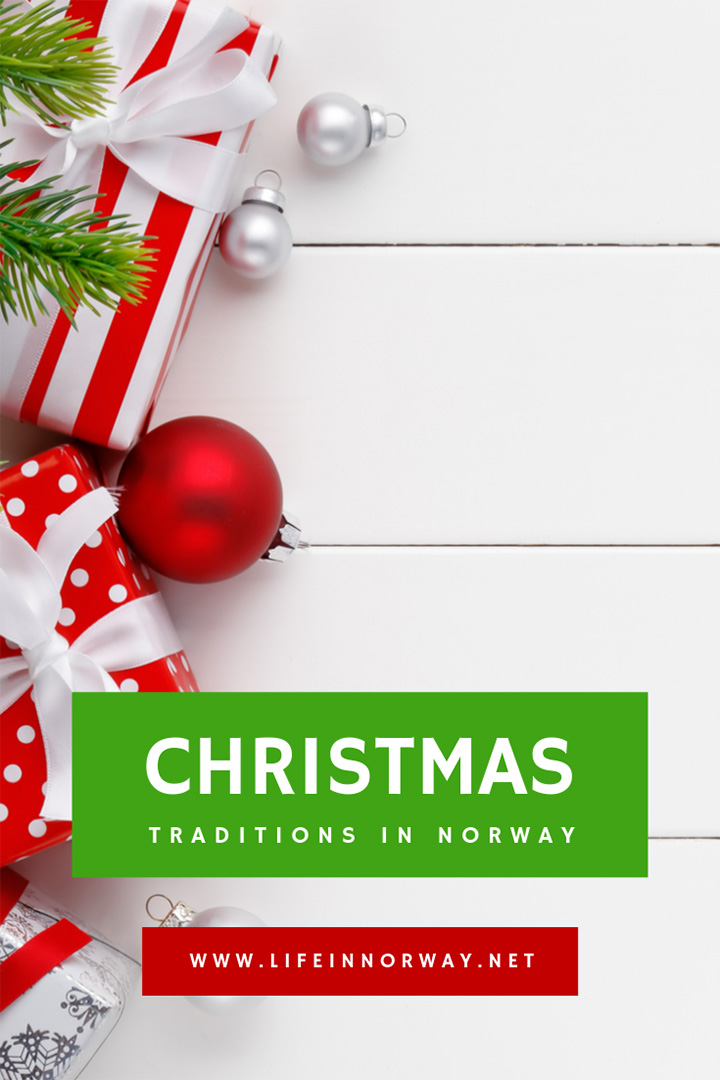
Introducing Jul
The term jul is common throughout Scandinavia, referring to a period of time that lasts several weeks in total. That being said, most people use jul to refer to the week stretching from Christmas Eve to New Year's Eve.
The full jul period is made up of five phases: advent, julaften, romjul, nyttår, and epiphany. So, jul follows a Christian calendar but has retained several pre-Reformation and pre-Christian elements.
Some Christian traditions are also observed, such as Santa Lucia Day on 13th December. While the celebrations are not as notable as in Sweden, young Norwegian children often participate via their school or kindergarten.
When do Norwegians celebrate Christmas?
It sounds like a stupid question, right? Well, I grew up with 25th December as the focal point of Christmas. I know many of you will have, too. But here in Norway, the focal point of the celebration is very much the evening of the 24th December.
Read more: Public Holidays in Norway
Julaften (Christmas Eve) is the day when presents are exchanged and the whole family gets together for the main Christmas meal. Christmas Day is a much quieter affair and often quite private.
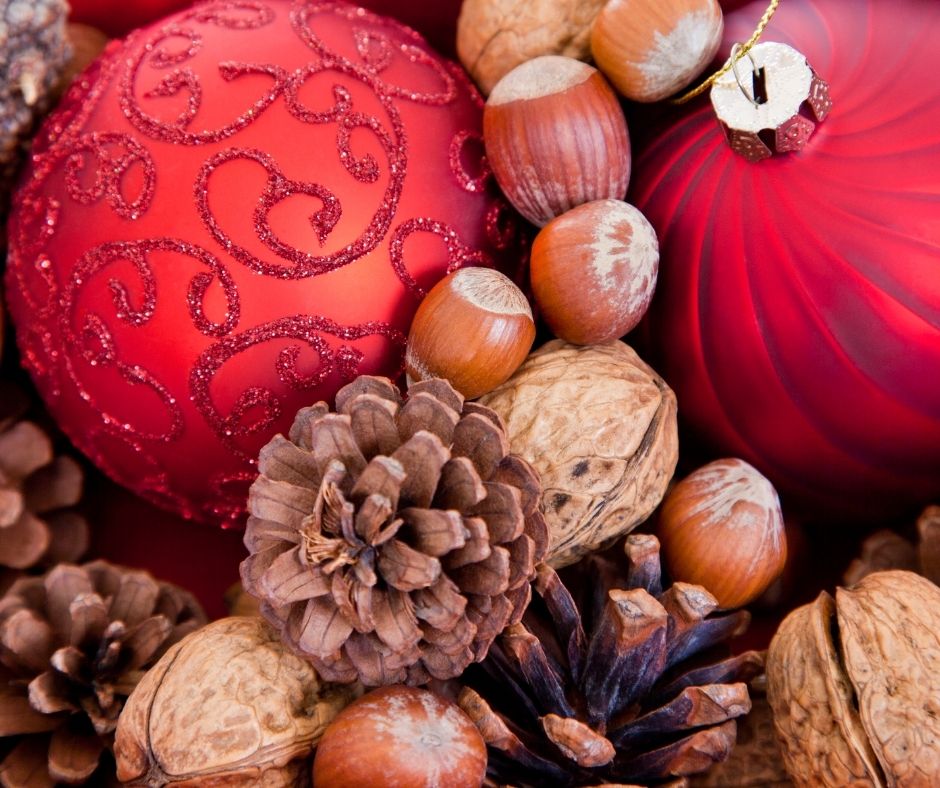
This is followed by romjul. It's one of my favourite words in Norwegian as it's only six letters long yet we don't have an equivalent word in English! Simply put, it translates as: “that time between Christmas and New Year when no-one is really sure what they should be doing.”
Employees are often encouraged by their employers to take the period of romjul off as part of their annual leave. Some may give bonus days to reduce the amount of vacation days an employee needs to take from their annual allowance.
The Norwegian Santa Claus
First up folks, sorry to say but, there's no such thing as Santa Claus! But seriously, the real Santa Claus lives in Rovaniemi, Finland. The Santa Claus Village tells the story as follows:
When Santa Claus declared Rovaniemi as his hometown, he told how his home at Ear Mountain (Korvatunturi) was revealed at the beginning of the last century and how this closely guarded secret spread the world over. In order to retain the privacy of his secret location, the Elf folk decided to build a place where Santa could meet people from near and far at the Northern Arctic Circle.
But despite his home being so close, Santa Claus is not the most common Christmas icon here in Norway. That honour goes to julenisse.
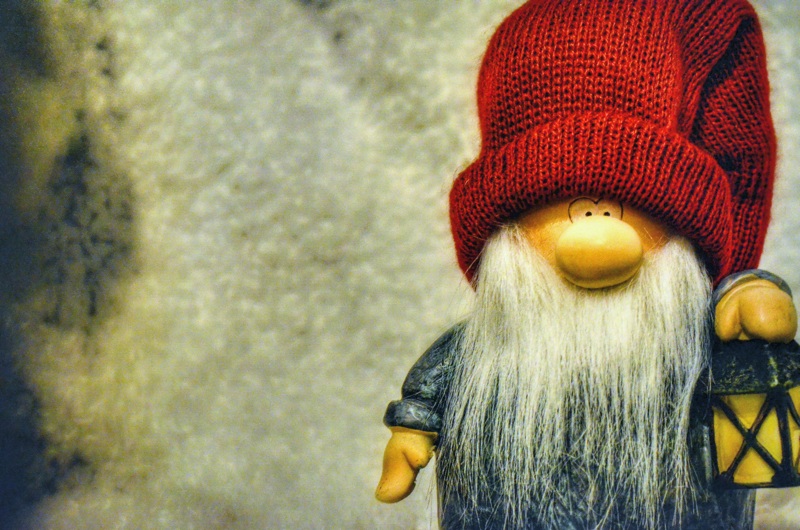
A creation from Scandinavian folklore, a nisse (tomte in Sweden) is a short creature with a long white beard and a red hat. Julenisse means the gift-bearing nisse at Christmas time. Sound familiar?
Christmas markets in Norway
The festivities tend to get going in the early part of December. That's when Christmas markets spring up in towns and cities across the city.
While snow is not guaranteed at this time of year in many places, you are pretty assured of chilly temperatures! That makes the spiced, mulled wine (gløgg) taste all the sweeter.
Stalls typically offer a selection of products from local craftspeople and artists. There's also a strong focus on food. This ranges from opportunities to buy local produce from farmers (meats, cheeses and gifts) to tucking into a reindeer burger in a tent by an open fire.
Julebord
Ah, the good old fashioned Norwegian Christmas party! Every company, school, sports club and social group hold their own julebord (literally ‘Christmas table').
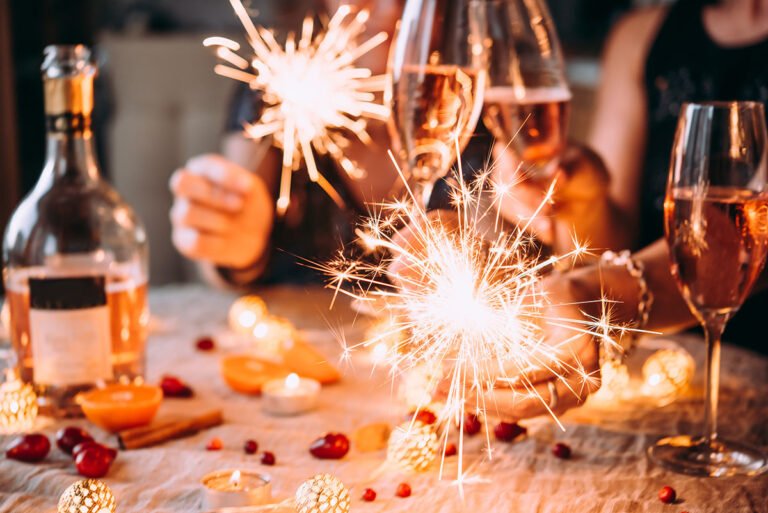
Partners are usually welcome. That means that most Norwegians will attend two or more of these events during December, or possibly even in late November.
These communal gatherings are an important part of Norwegian culture. Traditional food (more on that later!) is often served. Large amounts of alcohol are consumed and normally followed up with a late-night party (with the exception of school julebords of course!)
Curiously enough, while Norwegians normally dress fairly casually, the julebord is one of the rare occasions when they dress up in formal attire. If you're about to attend your first julebord, don't show up in jeans!
Christmas food
While the English eat turkey and Americans tend towards ham, roast beef, or goose, Norwegian Christmas food is based around totally different traditions. But what's on the dinner table does vary. But it also varies. The food Norwegians eat at Christmas is largely defined along regional lines.
Perhaps the most common Christmas dish is ribbe, which is simply seasoned pork belly. It's usually served with sauerkraut and redcurrant sauce. Pinekjøtt (mutton) is popular in the western counties, as is cod or other fresh fish.
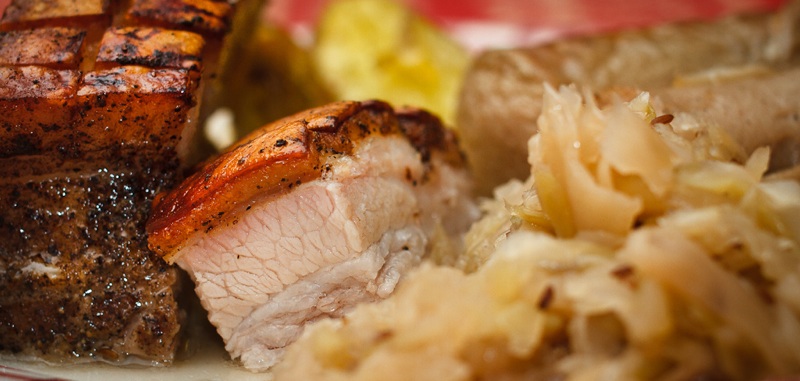
But what about lutefisk, I hear all the Norwegian Americans ask! Well as far as I can see, lutefisk is eaten in the couple months prior to Christmas, but not necessarily at the main dinner. If you're wondering what lutefisk is, head on over here for the full details.
Christmas drinks
In the run-up to the festive period, most breweries release batches of juleøl. These are Christmas versions of their beers, most usually darker and spicier than their regular brews.
Norwegian magazine Klikk rated Trondheim's own Dahls Juleøl the best of 2014, closely followed by Tuborgs, Grans and Ringnes. Skål!
For those who don't drink alcohol, most breweries also produce julebrus, It's a sweet soda loved by Norwegians young and old, and a great alternative for designated drivers or those who don't drink alcohol.
If you want to amuse yourself at this time of year, just tell a Norwegian from Bergen that Lillehammer's juleøl is the best you've ever tasted. Sit back and watch the fireworks. Yes, Norwegians get very precious about “their” Christmas beers!
Gingerbread houses
The most popular sweet treat at this time of year is pepperkake, a crispy gingerbread. They are available in shops in small cookie form, typically in the shapes of stars or people, but are often home-made too.
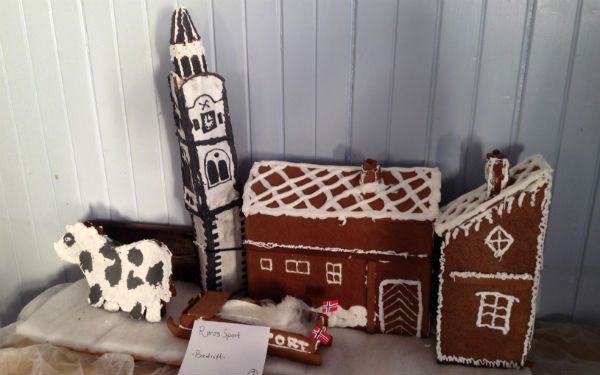
A common sight during the Christmas period are gingerbread houses, made from a thicker mixture and decorated with icing and other sweets. The best I've seen were at the Røros Christmas market, although I'm told Bergen's pepperkakebyen (gingerbread city!) is a sight to behold.
The Trafalgar Square tree
One of the biggest Norwegian traditions is actually n the British capital, London! Each year, Norway fells a tree in the forests outside Oslo. This ceremony is usually attended by senior politicians and the British Ambassador, among others. Typically, a 50-60-year-old Norway spruce at more than 20 metres tall is chosen.
The tree is then sent to London to stand proudly in Trafalgar Square as a vital part of London's festive makeover. The reason for all this? The tree is a token of gratitude for the British support of Norway during World War II.
But the Trafalgar Square tree is actually just one of several that Norway gifts to the UK at this time of year. You can find Norwegian Spruces in Edinburgh and even the Orkney Islands, among many other locations.
Christmas in Norway now on Kindle
Before we get going, if you want the full story you can check out Christmas in Norway, available now exclusively on Kindle!
Find out how Norwegians celebrate Jul in this short Kindle book, designed to inform and inspire your own Christmas celebrations, wherever you are in the world. It's available now in all Amazon stores including Amazon.com and Amazon UK.
Full disclosure: This ebook was published several years ago and hasn't been updated since then. However, traditions are slow to change so there should still be plenty of relevant information inside.
Merry Christmas Everyone. Or as they say around these parts: God jul!


I enjoyed your posts. I am president of Gulf Coast Vikings, sons of Norway Lodge in Estero, Florida ( southwest Florida on the Gulf of Mexico).
Would it be alright with you if I share your posts in our Gulf Coast Vikings Page on Facebook. Most of our members were not born in Norway. Their parents, grandparent or great grandparents are from Norway. Harriet
Of course, Harriet!
Thank you David! Merry Christmas!!!!
Nope
I am a Norwegian living in Dublin atm and wow, did this give me a longing for home. I will go home for Christmas and I am looking tremendously forward to it.
Another tradition is the movies on Christmas eve morning/afternoon (the same movies EVERY year – they tried to change it one year and basically got death threats), and the Christmas calendar on TV with one new episode every day. Without the snow, julebrus and juleøl the NRK calendar is all I have to try to get into the holiday spirit (that, and winter sports).
And aquevit, of course. I hate the stuff but it’s a Christmas tradition for a lot of people.
God jul!
Sorry for the double post, but just some trivia for those interested: The “nisse” tradition in Norway goes back centuries and centuries. In many ways it is connected to old beliefs of elves, gnomes etc. Norwegians used to believe nisse families lived in barns etc. connected to the farms. They believed the nisse families would help them with the farm during the spring and summer and sometimes did pranks. A lot of Norwegians to this day swear the farm nisse on their family farm exists (some even that they’ve seen it). Because of this tradition a lot of Norwegians put out Christmas porridge on the porch at Christmas Eve for the nisse families to eat.
So the nisse is much older than Santa Claus! 🙂 That being said, Norwegians also celebrated Christmas long before Christ, which is why Christmas is called jul (yule) here. It was a celebration of the winter solstice and the sun turning and light coming back, a festival of light in the darkest part of the year. Which is probably also one of the reasons Christmas Eve became the most important day here, as the 24th is closer to the solstice than the 25th.
my grandmother came to America at the age of 16. all my life we left a saucer of milk for the missed to bring us luck through the year my family 3 generations later keep it alive. thank you for your post.
I suppose you mean “we left a saucer of milk for the Nisse”.
Sooo interesting, thank you! I do remember being in Norway at Christmas and everybody seemed to watch. an old. comedy skit on t.v. about a wealthy old lady and her butler, and the butler takes a swig of everybody’s liquor as he. goes around the table, starts to slur his words, trips over the rug a few times, it was funny! Christmas was very koselig in Norway.
Thanks for this site David and for the time you put in to it. I’m an 82 year old first generation Norwegian/American born in Bayridge Brooklyn (more Norwegians lived there than in Bergen, Norway’s second largest city) in 1932. My mom, Solveig, held fast to the holiday traditions as did our neighbors. The most delicately delicious krum kakke, Fattig man, hazelnut cookies, sand kakke and various other delicacies were baked the whole week preceding Julaften. I had it better than other Americans who celebrated on the 25th in that after the depression we had big Xmas Day roasts as well and went visiting our relatives for “coffee & cake” and leftover turkey and such. A real treat was to sample the other Norwegian Cookies that folks from different home towns in Norway had baked with great variation and whipped cream fillings of rum and fruit ‘saft’. Mom had anold hah ‘hexe’ woman riding a broom hanging over the fire place opening and if she faced in it was to be bad weather and vice versa if facing out. She was surrounded by Jule Nisser all hanging by silken red threads. To my Dad’s shagrin, she strung lines of tiny Norwegian flags hanging on lines of red thread spiraling down around the Xmas tree. He’d say, in Norwegian, We’re in America now and what do patriotic flags have to do with Xmas? I guess she was very home sick at Xmastime.
Very interesting to read your family traditions first hand, George! You could make an oral history project with any other American Norwegians you know. Good yule!
I am not quite sure what you re trying to say but I suppose you mea “we left a saucer of milk for the Nisse” since that makes sense.
More than likely, the misspelling was caused by auto-correct.
Spelling: “an old heks riding a broom” and Krumkake with one “k”, and sandkake. No a at the end and one k.
My grandparents were also first gen. Norwegian Americans in Bay Ridge! So lovely to read your reminiscenses!
I grew up with all the same traditions, as well as listening to their stories of the holiday season!
I love these stories, thank you George! My. great-grandparents came to Brooklyn from Bergen in the early 1900’s, Martin Iversen and Hedwig Andresson. I have Norway in my blood and. bones, and am teaching myself norsk. now. When I am in. L.A. visiting my son I attend jul festivities at the Sjømannskirken.
God jul!
I am so happy to read your post! Thank you for bringing my grandparents and our Juls back to me! My great grandmother julie larsen came to America alone as a teenager in the 1890s. Her older sister Anne was already here. They lived in Bayridge, of course! My grandfather met my Norwegian mormor there, and my dad and his siblings grew up there and in Flushing, Queens. We had some of the food and decoration traditions, which i loved then and now. My tante solveig and uncle vincent (grandfather’s bro.) met in Bayridge, too. I even had to get my krumkake iron from Bayridge decades later!
Again, tusen takk!
Wonderful to read your remarks, having been born into a very Norwegian family in Bay Ridge, shopping at the Norwegian stores, attending the very Norwegian Trinity Lutheran Church/46th Street, & annually participating in what was then the largest Syttende Mai Constitution Day parade outside of Norway until I married & moved away. It brought back good memories & some homesickness. Thank you for sharing!
Hi David, I’m enjoying reading your Christmas in Norway posts! We will be int Tromso for Christmas this year (with a 12 yo and a 10 yo who both still believe in Santa Claus) and expect it to be a very, very different type of Christmas than we have here in tropical Queensland (in Australia).
I’m wondering what you, or your readers, might recommend we do for our Christmas celebration. I understand most restaurants will be closed….. thanks!
Sounds lovely! But yes, you can expect shops and restaurants to be closed. I’ve never been to Tromsø at Christmas so can’t pass on specific advice, but I would suggest contacting hotels to see if they are offering a Christmas dinner/event (which will be on Christmas Eve, not Christmas Day). Enjoy!
Great post. My husband & I are both descendants of Norwegians (I was an Olson, he is a Sande). My in-laws never touched a drop of alcohol, but surely made and ate wonderful lefse, krumkake and lutefisk. You’ve inspired us to make some of these old favorites this year. Thank you.
You’re welcome! God jul 🙂
God Jul.
Merry Christmas from Las Vegas ! Many lost Norwegians live here.
We had non-alcoholic gløgg at work last week (a couple of hours north of Trondheim) and fresh lefse with lots of fillings (cheese/local salmon/jam/rømme). I have made lussekatter for the first time and discovered that it’s traditional to make about 7 different types of biscuits (but apparently people make less in recent years). Here a different meal each day of Christmas is enjoyed apparently. It’s interesting to learn about different traditions and we’re trying to figure out how our English-Trøndelag Christmas will be for our children. As Santa comes to the front door and delivers a present each on Christmas Eve afternoon to local children (apparently a neighbour or relative dressed up) , I don’t know if they will adjust to such a big change 😁 Seasons greetings everyone
At our Sons of Norway Lodge 3-515 we had a major Julefest celebration which included salmon, ham, fruit soup, rice soup, cucumbers, beets, lefse, krumkakke, sunbakkels, and lots of other cookies and cakes. Unfortunately no lutefisk or aquavit but we did have gloog, from Ikea store. We had a presentation from a immigrant Norwegian, sang songs and reminded me of my childhood. I have two nissers that didn’t want to leave the workshop to go to the party cause they had beer and porridge.
I am enjoying your articles. It takes me back to a time when I lived in Stavanger for 9 years. My daughters grew up in this wonderful place. Their children do not know the wonderful traditions of Norway so my next children’s storybook, Farting Four-toed Troll, will give them an insight to the beauty and goodness. The children will learn in a fun take on the Julenisse that it is good to be kind, call people by the correct name and help feed the animals.
Sounds like fun. Nothing like some farting, fourfooted trolls to teach about beauty and goodness. Classy, too, for Christmas Eve.
Hey hey, i’m kim and i’ am a vlogger from the Philippines and you gave ideas on my next video but i have to ask you first if i can film some of the facts you wrote here cause i don’t want to be a thief of ideas so maybe you’ll allow me get some of your idea, so that i can film my video about norway christmas and how they celebrate it.
Thank you
Kimberly Dagsland
Christmas celebrates the birth of Jesus Christ in Bethlehem, so where is Jesus in the above customs and
Celebrations?!
This is a good beginning, but there is so much more. How about the tree in Washington, D.C.? That is a tradition going back a bit. How about the tradition of baking seven types of cookies for Christmas? Getting the house ready? Etc. etc. etc. Thanks.
Seems like you know this stuff pretty well – maybe you should write your own blog post?
Just to let you know ,here in Scotland, Edinburgh receives an annual Christmas tree from Norway too
Just to let you know ,here in Scotland, Edinburgh receives an annual Christmas tree from Norway too.
Gifted by Hordaland County, for Scots support for the over 7000 exiled Norwegians during World War 2.
I enjoy your stories. I lived in Norway for over 3 years and have a daughter and son-in-law and 3 grandchildren that live in Trondheim. I played music in Norway for most of those years and had other jobs when I wasnt on the road. I miss Norway and all the friends I made. Have a great holiday season. Gary Burns
We eat lyefish christmas eve, so Does many people in the farming communities in innland norway were fish from the sea, was a rare treat. Lutefisk, eggbutter, potatoes and lefse. Never addition is bacon bits. It is alsopractical when You came home rom church it is a quick meal. Pork belly is NOT eaten with red currant sauce, it is eaten with sauerkraut, wild cranberries jam, medisterkake ( big meatballs made of sausage meat) and sausages of different sorts,potatoes «almond potatoes» or ringerikspotet (potatoes from Ringerike- special variety that is only available at christmas) caramelized apples, cooked prunes and sauce made from panjuices from cooking the pork belly. Crackling is an esssential part of the pork belly eating, if crisp crackling is not present- indicates terrible Cook. Has brought many mothers to nervous breakdowns as they have failed the crackling test.
Can you supply an address to acquire Norwegian Cheese, either Norway or U.K.
I married a man from Washington state. I am from gulf coast of Texas.learned a lot of Swedish , Norse and Denmark while stationed. We made our own pickled herring (very good), lutefisk and a lot of other dishes from my mother in law. I actually liked the lutefisk. Acquired a selection of the Tomte’s. Still put out mostly around Christmas. Really enjoyed learning the traditions of Scandinavia.
Hi to all Norwegians out there! Thank you David for your Life in Norway read!
Correct me if I’m wrong but currant jelly may be served with sour kraut but Lingonberry jelly or jam is the ultimate Queen on a Julebord! How many different kinds of lefse are there in Norway? There’s most likely one for each county and potato lefse is usually wrapped around a hotdog as a bun. Good lefse is honored with butter and other ‘goodies’. Let’s not forget Risgrøt which is served on New Year’s Eve in some regions.
Happy Holiday to all!